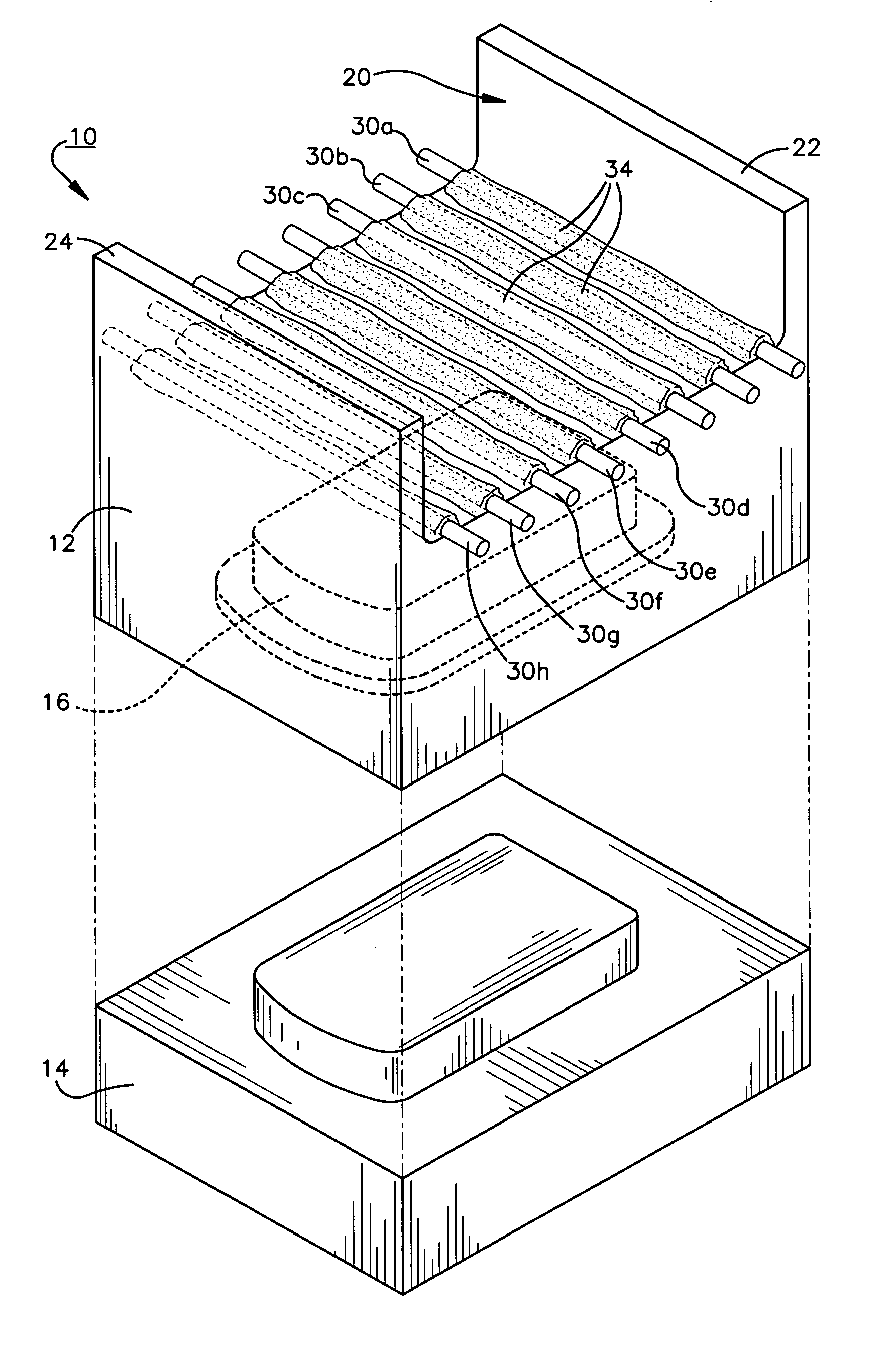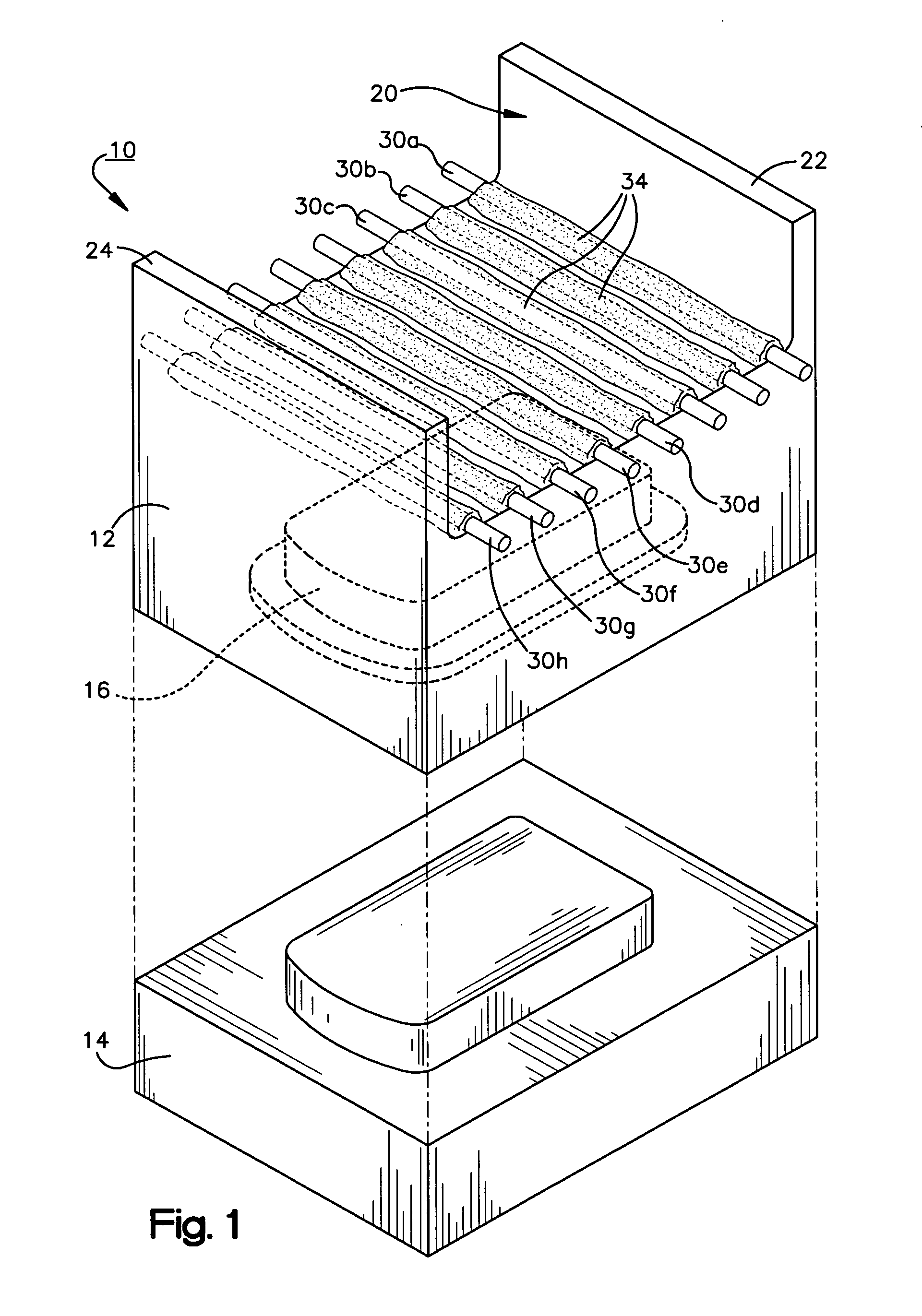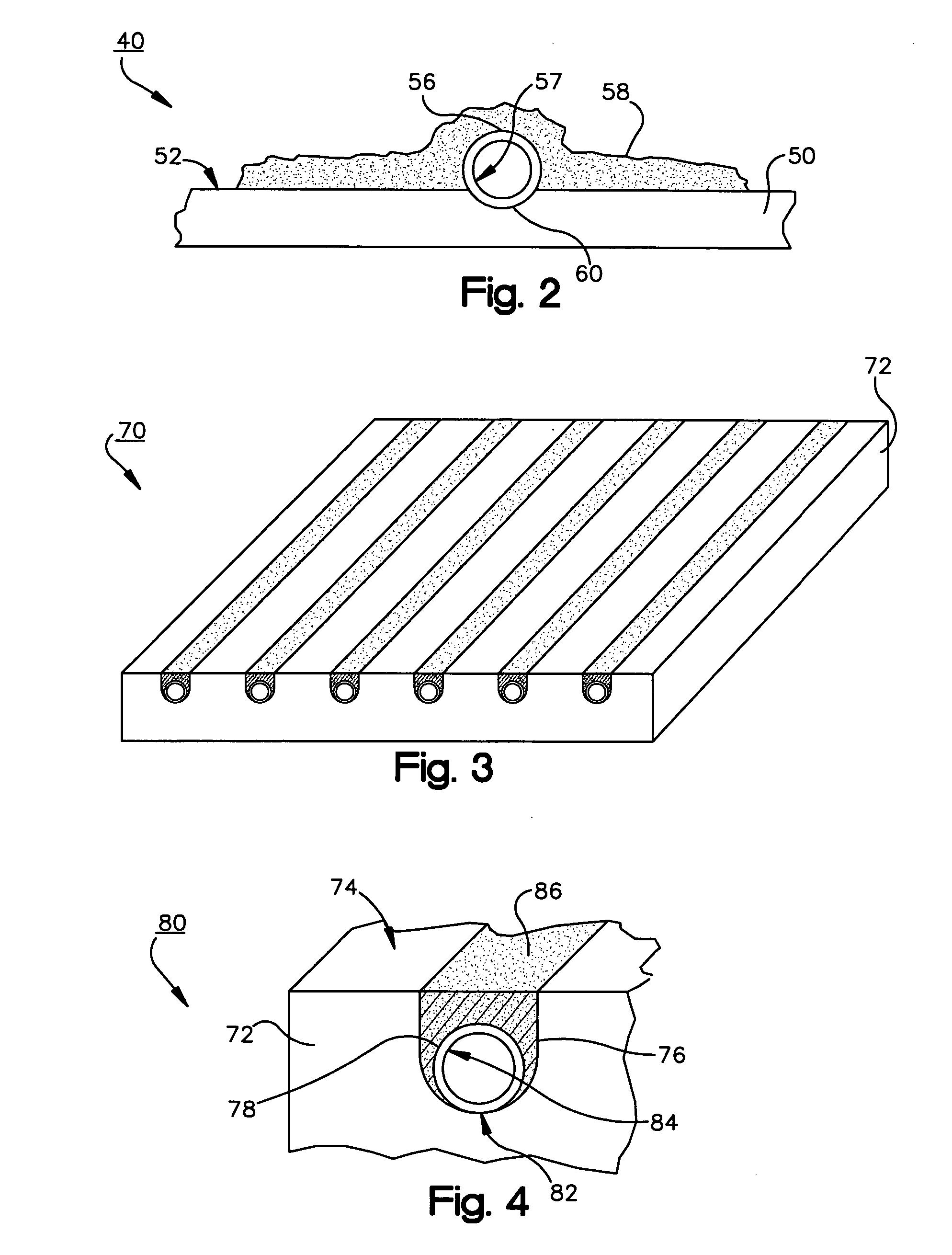Heat transfer system for a mold
a heat transfer system and mold technology, applied in the field of heat transfer systems, can solve the problems of operator safety problems, molds have a tendency to heat up during use, and production delays,
- Summary
- Abstract
- Description
- Claims
- Application Information
AI Technical Summary
Problems solved by technology
Method used
Image
Examples
first embodiment
[0011]FIG. 1 is a perspective view of a mold assembly constructed according to the present invention;
[0012]FIG. 2 is a cross-sectional fragmentary view of a portion of the mold assembly illustrated in FIG. 1, showing a tube rigidly attached to an external surface of a mold base;
second embodiment
[0013]FIG. 3 is a perspective view of an apparatus constructed according to the present invention;
[0014]FIG. 4 is a cross-sectional fragmentary view of a portion of the apparatus illustrated in FIG. 3, showing a tube rigidly attached within a channel defined by an external surface of a mold section;
[0015]FIG. 5 is a top view of a mold assembly constructed according to the first embodiment of the present invention, showing elongated hollow members running the length of the mold assembly; and
[0016]FIG. 6 is a cross-sectional view of the mold assembly of FIG. 5.
PUM
| Property | Measurement | Unit |
|---|---|---|
| Diameter | aaaaa | aaaaa |
| Length | aaaaa | aaaaa |
| Volume | aaaaa | aaaaa |
Abstract
Description
Claims
Application Information
 Login to View More
Login to View More - R&D
- Intellectual Property
- Life Sciences
- Materials
- Tech Scout
- Unparalleled Data Quality
- Higher Quality Content
- 60% Fewer Hallucinations
Browse by: Latest US Patents, China's latest patents, Technical Efficacy Thesaurus, Application Domain, Technology Topic, Popular Technical Reports.
© 2025 PatSnap. All rights reserved.Legal|Privacy policy|Modern Slavery Act Transparency Statement|Sitemap|About US| Contact US: help@patsnap.com



